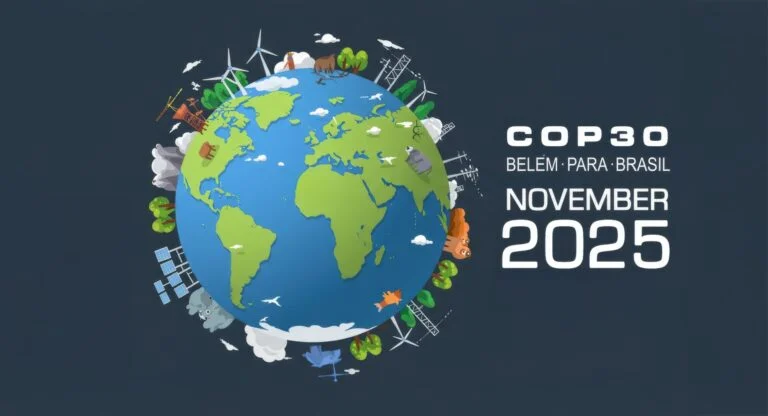Day 9 of COP30 in Belém marked a shift from technical discussions to more politically charged negotiations. With ministers arriving,...
Read More- Industry Updates
Energy Innovation Summit 2025: Key Insights
-
 Kate McCann
Kate McCann
- 3 minute read
Discover More
The Energy Innovation Summit returned to Glasgow on 5–6 November, bringing together leaders from across the energy sector to explore the ideas, technologies and programmes shaping the UK’s progress toward Clean Power 2030. Held at the Scottish Event Campus, the event highlighted how innovation is becoming embedded across the country’s energy networks and how the pace of development is accelerating as the 2030 target draws nearer.
Setting the Direction for Clean Power 2030
The Summit opened with a firm focus on system-wide coordination. Senior representatives from Ofgem, the National Energy System Operator (NESO) and the Energy Networks Association (ENA) stressed that achieving a secure, affordable low-carbon system requires a more unified approach across governance, operational frameworks and data-sharing. Much of the early discussion centred on overcoming the barriers that currently prevent successful trials from being scaled effectively.
Speakers emphasised the need for clearer decision-making pathways, greater consistency between network operators and a more agile regulatory environment that can keep pace with the demands of Clean Power 2030. The tone was clear and direct: the next five years will be defined by how quickly the sector can move from innovation to implementation.

The Central Role of Flexibility
Flexibility emerged as one of the dominant themes of the summit. With electrification continuing to intensify demand across the grid, flexibility services are becoming essential to maintaining system balance. Presentations explored the rapid development of flexibility markets and the increasing sophistication of platforms that enable real-time forecasting, coordination and optimisation.
There was substantial discussion around the evolution of commercial models that support demand-side response, storage deployment and local balancing. Case studies presented by Distribution System Operators illustrated how flexibility is already being leveraged to reduce network constraints and accelerate low-carbon connections. In many sessions, flexibility was described not just as an operational tool but as a strategic pillar of the future energy system.
Innovation at Scale
Innovation was visible in every part of the event, particularly through the extensive exhibition hall and the highly attended breakout sessions. Delegates engaged with more than one hundred projects covering areas such as digital twin deployment, enhanced fault detection, predictive analytics, community energy integration and new approaches to connection management.
Many of these projects demonstrated how digitalisation is helping networks forecast demand, identify constraints earlier and streamline customer journeys. Core processes such as connections, reinforcement planning and voltage control are already being reshaped by these innovations. The breadth of activity made it clear that the UK is moving beyond isolated pilots and into a phase where innovation is becoming fully embedded in operational practice.
Quantifying the Impact
A major announcement on the second day of the Energy Innovation Summit provided a numerical illustration of the sector’s progress. The ENA unveiled new modelling estimating that innovation across Britain’s electricity networks is expected to deliver nearly £14 billion in value in the years ahead. This projection reflects cost savings, efficiency gains and operational improvements generated by innovation portfolios.
The release of this analysis added a sense of urgency to the discussions, highlighting that the benefits of innovation are no longer abstract or theoretical. Network operators shared examples of how these gains are already materialising, from reduced reinforcement needs to faster processing times for low-carbon connections.
Strengthening System Resilience
Resilience was another key theme woven through the summit’s agenda. Sessions explored how the increasing complexity of the energy system is creating new challenges across cyber-security, climate adaptation, digital infrastructure and the integration of electricity, gas, hydrogen and heat networks. Much of the conversation focused on developing forecasting tools and monitoring technologies that enable earlier detection of faults and vulnerabilities.
Speakers also discussed how data integrity and system interoperability are becoming fundamental components of resilience, particularly as more assets, sensors and digital platforms are connected across the energy ecosystem. There was widespread recognition that resilience must evolve to match the demands of a more electrified and digitally enabled network.
The Energy Innovation Summit 2025 demonstrated that the UK’s transition toward a low-carbon, flexible and digitally mature energy system is now well underway. The discussions, case studies and modelling presented throughout the two days reflected a sector that is rapidly scaling innovation, sharpening its focus on delivery and laying the foundations for the next phase of transformation.
Facebook
LinkedIn



